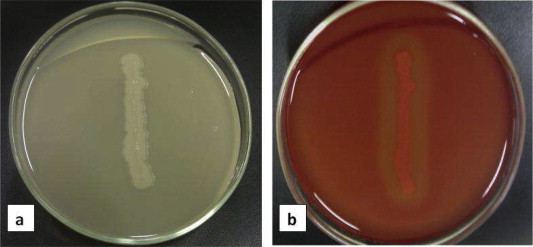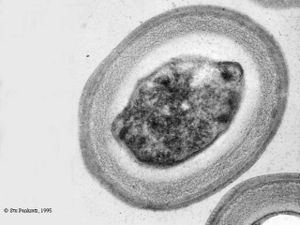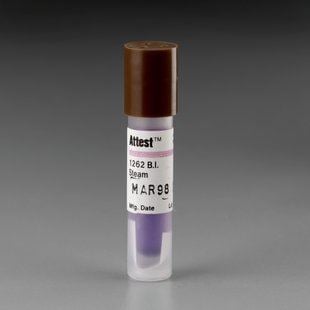Kingdom Bacteria Rank Species | Higher classification Geobacillus | |
 | ||
Scientific name Geobacillus stearothermophilus Similar Geobacillus, Bacteria, Bacillus, Hay bacillus, Bacillus licheniformis | ||
Medical vocabulary what does geobacillus stearothermophilus mean
Geobacillus stearothermophilus (basonym Bacillus stearothermophilus) is a rod-shaped, Gram-positive bacterium and a member of the division Firmicutes. The bacteria is a thermophile and is widely distributed in soil, hot springs, ocean sediment, and is a cause of spoilage in food products. It will grow within a temperature range of 30-75 degrees Celsius. Some strains are capable of oxidizing carbon monoxide aerobically. It is commonly used as a challenge organism for sterilization validation studies and periodic check of sterilization cycles. The biological indicator contains spores of the organism on filter paper inside a vial. After sterilizing, the cap is closed, an ampule of growth medium inside of the vial is crushed and the whole vial is incubated. A color and/or turbidity change indicates the results of the sterilization process; no change indicates that the sterilization conditions were achieved, otherwise the growth of the spores indicates that the sterilization process has not been met. Recently a fluorescent-tagged strain, Rapid Readout(tm), is being used for verifying sterilization, since the visible blue fluorescence appears in about one-tenth the time needed for pH-indicator color change, and an inexpensive light sensor can detect the growing colonies.
Contents
- Medical vocabulary what does geobacillus stearothermophilus mean
- 3f4c of geobacillus stearothermophilus strain 10
- Polymerase
- References

Biological indicators are used in conjunction with chemical indicators and process indicators to validate sterilization processes.
It was first described in 1920 as Bacillus stearothermophilus, but, together with Bacillus thermoglucosidasius, it was reclassified as a member of the genus Geobacillus in 2001.
3f4c of geobacillus stearothermophilus strain 10
Polymerase
Recently, a DNA polymerase derived from these bacteria, Bst polymerase, has become important in molecular biology applications.

Bst polymerase has a helicase-like activity, making it able to unwind DNA strands. Its optimum functional temperature is between 60 and 65 °C and it is denatured at temperatures above 70 °C. These features make it useful in loop-mediated isothermal amplification (LAMP). LAMP is similar to the polymerase chain reaction (PCR) but does not require the high temperature (96 °C) step required to denature DNA.

